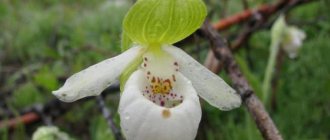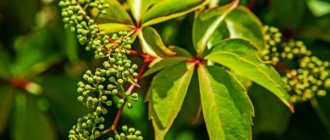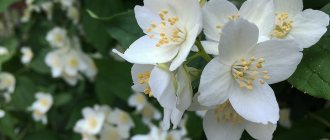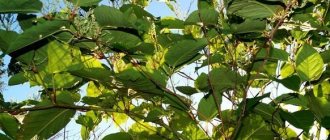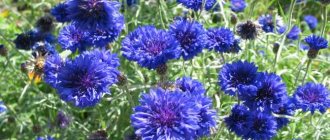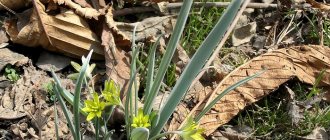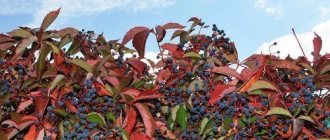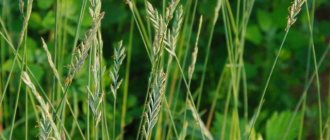Lady's slipper is a flower that is a very unusual variety of orchid. It received such an original name due to the shape of the bud, in which one of the petals resembles a tiny shoe, and the rest surround it like festive silk ribbons.
The reasons why the flower received this name are unknown, but there is a legend that once upon a time, Venus, the ancient Roman goddess of love and beauty, lost her shoe in the forest, which turned into this beautiful and delicate flower.
The slipper grows in European countries, including Great Britain, but it is not found too often. Preferring well-moistened soils sheltered from the sun, the flower most often settles in sparse mixed forests and bushes.
Lady's slipper is a perennial plant. This means that while fading in the fall, the same flower produces new shoots the following spring. This happens because the lady's slipper reproduces with the help of rhizomes - while there is a snowstorm on the ground and everything is covered with snow - the roots of the plant are securely wrapped in the ground and patiently await the onset of warm days. It’s hard to believe, but during the first years of life, the lady’s slipper lives and develops entirely underground, without releasing a single shoot into the light. There it grows, gets stronger, “establishes” the root system and only then sprouts. But in order to see the first buds on the lady’s slipper, you will have to wait a few more years - many species produce flowers only 8-17 years from the beginning of development.
Why is it called that?
The Latin name of the flower is cypripedium calceolus. The names real slipper or ordinary slipper are also used. Residents of Russia came up with their own names for the charming plant: Adam's head, Virgin Mary's shoes, Mary's slipper, sometimes called yellow slipper, cuckoo boots or cockerels.
There are many fairy tales and legends about the lady’s slipper and the origin of its name. There are many types of legends on this topic. One of them says that the goddess of love, Venus, got lost in the forest and lost her shoe in it. The shoe left by the goddess turned into a beautiful, bright yellowing flower.
Short description
The lady's slipper belongs to the orchid family. It is easy to spot from a distance: thanks to its high (up to 60 cm) stem and bright yellow color, the flower stands out perfectly among other forest plants.
Flowers are solitary. At the bottom of the inflorescence there protrudes a lip - a petal shaped like a container: a shoe, a jug, a barrel.
Why this particular form? It was not by chance that nature created the bowl-shaped configuration. It is like a trap: fragrant nectar collects inside this structure, and insects, falling into it, involuntarily produce pollination, which is so necessary for the flower.
The surrounding petals have a lanceolate shape with a pointed tip. They are red-brown in color, and beautifully set off the yellow, and sometimes white or greenish bowl of the flower.
How does it reproduce
Lady's slipper from the Red Book reproduces both by seeds and rhizomes. Its seeds are very light, resemble pollen, and often get stuck on the leaves of trees and shrubs. Once in the soil, they grow only in symbiosis with soil fungi.
A special feature of the plant is the long-term underground formation of roots, with the help of which the lady’s slipper subsequently reproduces. Shoots appear only after three years, and the first buds appear after 8 years, and then only in favorable conditions. Flowering begins in mid-May and lasts 2-3 weeks.
Red slipper (Cypripedium macranthon)
The red slipper is an orchid that grows in the forests of Siberia. In folk medicine it is used to treat nervous disorders and is a good sedative. The plant is poisonous!
Article on the topic: Grandiflora slipper - useful properties, description
Table of contents
Flower formula
In medicine
In folk medicine, the slipper is used to treat nervous diseases: headaches, migraines, epilepsy, schizophrenia. The shoe calms, gives lightness and joy. In small doses it can relieve feelings of fear and anxiety.
An infusion of leaves helps stimulate labor and also treats female diseases. In ancient times it was used to stop uterine bleeding. It is also a diuretic and relieves swelling.
But it is considered a poisonous plant, so consumption is possible only under medical supervision and in very limited doses.
Contraindications and side effects
Red slipper is considered a poisonous plant. It is not recommended to eat it or use it without a doctor’s prescription; large doses can depress the nervous system. Taking it internally has a negative effect. Being near the plant, touching it and the aroma emanating from it do not harm a person. Only the leaves contain poison as protection against wild animals.
During pregnancy and lactation, infusions and decoctions with shoe are prohibited. It is not recommended to continue taking the shoe if, after the first use, weakness, anxiety, nausea or redness of the skin appears.
In floriculture
The red slipper is an orchid of magnificent beauty. It is grown to decorate rooms, gardens and parks or for sale. It was first planted in the St. Petersburg Botanical Garden at the beginning of the 20th century, but today individual flower companies grow slippers in many regions of Europe for room decoration. Shoe seeds can be bought at any store, but it is important to remember that the first buds will appear only after 1-3 years. Growing on a windowsill is difficult; the flower needs space. Today, lovers of this flower have orchid hybrids that feel great on the windowsill.
Classification
The red or large-flowered slipper (Cypripedium macranthon) belongs to the Orchid family (Orchidaceae), the species true cypripedium (Cypripedium calceolus). People have many names: Mary's slipper, Adam's head, Lady's slipper, cuckoo boots, cockerels, boots of the Virgin Mary. In America, the shoe is often called moccasin. There are more than 15 types of different shoes, they differ in the size of leaves, stems, and flower size.
Botanical description
Red slipper is a perennial plant that grows in forests or sandy areas. It has an erect stem reaching 45 centimeters in height, at the end of which there is one bright red flower. It is surrounded by large bracts up to 10 centimeters in size. Flowering usually occurs in May-June.
The leaves are wide, elliptical in shape, sharp. There are usually no more than four of them on one stem. The size of each leaf is from 7 to 16 centimeters, they are slightly hairy along the edges. The perianth is petal-shaped, consists of 3 outer and 3 inner leaflets, one of the inner leaflets is longer than the others and forms a lip with a narrow aperture. After flowering, the lower ovary is formed, then the fruit is formed - a capsule. Formula of the red slipper flower: ↑♀♂ CH3L3T3-1P(3¯).
Propagated by seeds and rhizomes. In symbiosis with certain soil fungi, it can remain underground for a long time. After the seeds fall into the soil, the shoe develops under the surface of the earth for 3 years; the first shoots are formed only in the fourth year of existence. It can remain underground in a dormant state for more than 10 years, while feeding on surrounding mushrooms.
The exact period of residence of the plant is unknown. Today, the oldest plant found in the USA is 23 years old. In one calendar year, the rhizome of the shoe grows only 3-4 mm, and the plant blooms only once every two years.
Spreading
You can meet the red slipper in steppe and forest-steppe zones. Grows in southeastern Europe, the Far East, and Siberia. Typically found on sandy soils in oak or coniferous forests. In recent decades it has been found very rarely in nature. You can see the flower in nature reserves or botanical gardens. It is considered a rare plant, therefore it is included in the Red Book of the Russian Federation.
Article on the topic: Iris aeriformes - beneficial properties, description
Today, the slipper can be seen in Russia on the territory of 13 nature reserves, as well as in several reserves where picking flowers is prohibited. But additional measures are needed to maintain the population.
The slipper flowers look like a slipper. This form is very original, different from most flowers growing in forest areas, so every summer people wander along the edges of the forest in search of this flower. Today it is becoming less and less common, as it has fragile roots and if the flowering bud is cut incorrectly, the plant is damaged. If a shoe is pulled out of the ground, and this is not at all difficult, it is no longer restored.
Procurement of raw materials
In folk medicine, the leaves and stems of the slipper are used to create healing decoctions. They are collected during the flowering period from May to July. It is important to cut off the green part of the plant without damaging the rhizomes, so that flowers will appear in this place next year.
The collected grass should be dried in the fresh air under shelters. Leaves should be turned every three days to avoid mold. Direct sunlight is contraindicated, as it can destroy all beneficial substances. Can be dried in special dryers at a temperature of 40 degrees.
Store dried shoes in a paper or cloth bag at room temperature. You can use it only for a year; later the medicinal effect may disappear.
Chemical composition
Pharmacological properties
There have been no medical studies on the red slipper, and it is not used in traditional medicine. Although alkaloids and a large amount of vitamins are found in its leaves and stems, the composition is not ideal for creating medicines. The plant is considered poisonous. It is very rare in the 21st century, it is difficult to grow, and therefore is not subject to mass study.
Self-medication with a red shoe is prohibited.
Use in folk medicine
The slipper is especially widespread in Tibetan folk medicine. It is used as a diuretic and anti-inflammatory agent. It is added to preparations to lower blood pressure, as well as to treat cardiovascular diseases. Always used together with other herbs, this helps enhance a certain effect.
In European territory it is famous as a sedative and as an assistant in curing mental illnesses. An infusion of the shoe is used for migraines, headaches, nervous disorders, and sleepwalking. Relieves epileptic seizures and prevents their frequent occurrence. The shoe is recommended for fainting, insomnia and constant deterioration of mood.
Special properties are attributed to the shoe during the new moon. A decoction created at this time provides a cure for schizophrenia, split personality, and obsession. In this context, it is used not only by healers, but also by magicians. These superstitions are not supported by medical research. It is dangerous to use the slipper without consulting a doctor; decoctions and infusions can cause poisoning.
Historical reference
People often associate the red shoe with shoes. And that is why there are different legends about the origin of this flower. In Ancient Greece, a story was born about the goddess of love Venus and Adonis. While hunting for animals, the couple was caught in heavy rain, a thunderstorm began suddenly and the young people hid in a cave. They indulged in lovemaking, and things were scattered around.
A man was passing by, he saw something bright near the cave and began to examine it. It turned out to be a beautiful shoe, he stretched out his hands to it, but at his first touch it turned into a magnificent flower. Since then it has been called “Venus’s slipper.”
There is another story, it is also connected with the goddess Venus. The girl rarely descended to Earth, preferring the heavenly palaces, but one day she went for a walk in the forest. Her appearance became a whole performance - all the animals gathered to admire her beauty. The birds sang their wonderful songs to her, and the breeze caressed her hair. Every corner of nature greeted the most beautiful woman in the world, praising her virtues. She devoted many hours to meeting the elements and animals, got tired and decided to rest. She lay down in the shade of a huge tree and, to make it more comfortable, took off her shoes. Then she forgot about them, and they turned into beautiful flowers that spread throughout the world.
Article on the topic: St. John's wort elongated - useful properties, description
Today, red slippers are not often found, because of their beauty they have suffered. People picked them to decorate their homes, but the cut flower does not live for more than a week.
Where does it grow?
The habitat of this type of orchid is very wide. It extends across the European and Asian continents, covering the territories of the USA and Canada.
The lady's slipper is listed in the Red Book of the International Association for the Protection of Wildlife.
There are five varieties of slipper growing in Russia:
- real;
- Shansi;
- grandiflora;
- spotted (with a thin, long and branched rhizome, from which numerous fragile roots extend);
- Yatabe.
The forest orchid grows in fairly moist soil, but at the same time does not tolerate very wetlands. In the northern regions, the main population groups are concentrated on limestones, lands saturated with calcium. The southern part of the range is represented by plants that bloom on peat and fertile soils.
The lady's slipper does not like direct sunlight; it settles on forest edges, in thinned mixed forests where there is moderate lighting. Russian species are adapted to frosty cold weather.
Preparation and storage of a real shoe
Raw materials are harvested in late spring or early summer. The medicinal value is provided by the leaves of the lady's slipper. They are carefully cut, washed and dried. Lay out in a thin layer on gauze or mesh in a well-ventilated area. Should be stored in a dry and warm place. Before preparing the preparations, the leaves are crushed.
Use in everyday life
The real slipper belongs to the Liliaceae genus and is called one of the most beautiful orchids. This is a very beautiful plant and can decorate any flower bed, but in the wild it cannot be picked, as it is listed in the International Red Book. Therefore, cultivate slippers in your areas and use them only for decorative purposes in gardens.
Use as a medicine
The Lady's slipper of the Red Book contains useful substances such as essential oil, tannin, and resinous substances. From its composition one can distinguish ascorbic acid and a significant amount of calcium oxalate.
Residents of Siberia and Tibet use the plant as a medicine for headaches, insomnia, epilepsy, cardiovascular diseases, schizophrenia, and convulsions in children.
There is a popular belief that the best time to collect orchids is during the full moon. During this period, the healing properties of the shoe from the Red Book are manifested in the best possible way.
Its stems and leaves contain toxic substances, so you should not self-medicate with the help of lady’s slipper or eat it.
It is not used in traditional medicine because it is rare, takes a long time to grow, is poisonous, and has generally been little studied.
Composition and medicinal properties of the real slipper
- Preparations from the shoe are mainly used in the treatment of insomnia and headaches. Its uniqueness is that it has a good hypotensive effect.
- In folk medicine, it is recommended to simply apply the leaves of the plant to the patient’s head.
- The plant contains vitamins B1, B2, A, P, microelements, organic acids, essential oil, resinous substances, calcium, potassium, iron, magnesium, strontium, titanium, cobalt, manganese, flavonoids.
- The leaves contain up to 280% mg of ascorbic acid.
Is it possible to breed Lady's slipper at home?
The culture has been grown for many years in 19 botanical gardens in Russia. A vegetative propagation method is used, separating part of the roots for replanting after 4-5 years. At the same time, many flowers grow without transplantation for decades. In total, the lady's slipper from the Red Book can live from 50 to 100 years.
Information about its successful cultivation in protected areas indicates that the plant can be grown at home without any particular difficulties. It is important to comply with the basic requirements:
- Avoid exposure to direct sunlight;
- preventing drafts;
- selection of proper soil composition.
The best place for growing is considered to be an area where the orchid will be in the shade for a third of the day.
It does not grow in black soil. There are recommendations for preparing the substrate for planting. Mix peat, charcoal, moss, add sand, limestone chips or dolomite flour. To disinfect the mixture, it is treated with special agents “Baikal-EM” and “Trichodermin”.
How to care for a lady's slipper during flowering
In order for an orchid to enjoy long-term flowering, it is necessary not to disturb the bush during the formation of buds. It is prohibited to move it from one place to another, or rotate it around its axis.
As for watering and fertilizing, nothing needs to be changed. At the end of flowering, the shoe should be given rest. To do this, you will need to reduce the air temperature to 150C. It is also recommended to significantly reduce watering and practically stop fertilizing the plant.
Security status
Lady's slipper from the Red Book, despite its huge distribution area, is a rare species of the plant world. In addition, its beauty and originality attracts bouquet collectors and flower growers who dig up bushes for replanting in their flower beds at their dachas. Its disappearance is accelerated by human activities such as deforestation and the development of vacant lands. In many regions near cities, this flower has long been absent from forests and river floodplains. Therefore, the yellow orchid is protected by the state. The Red Book of Russia helps to preserve this plant from destruction and expand its population. New reserves are being organized, such as, for example, in the Efremovsky district of the Tula region.
Interesting Facts
- In Russia, Lady's slipper is happily grown in summer cottages, flower beds and greenhouses.
- It has been noticed that the plant is more often found in forest plantations where birch and pine trees grow in combination.
- The orchid protects itself from herbivores by poisonous juice that accumulates in the leaves.
- The flower exudes a vanilla scent.
- Information about it is contained in the Red Book of the USSR from 1984.
- Reproduction of the lady's slipper is carried out by dividing the roots and planting part of them in the substrate. The best time for this is August-September.
Real slipper (black grass)
The lady's slipper is a perennial plant with thick roots and stems with fine hairs. It reaches a height of 50 cm, the leaves are elliptical in shape, pointed. There are only 1-2 flowers on one stem; they are brightly colored and look like small shoes. The plant blooms in mid-summer, the fruit is a dry capsule. The real slipper is widespread in Russia, the Caucasus, Siberia and Crimea. You can find it between bushes and in the forest. The plant prefers to develop well and grow in shady areas on well-moistened soils. It is frost-resistant and easily tolerates winter without snow.
